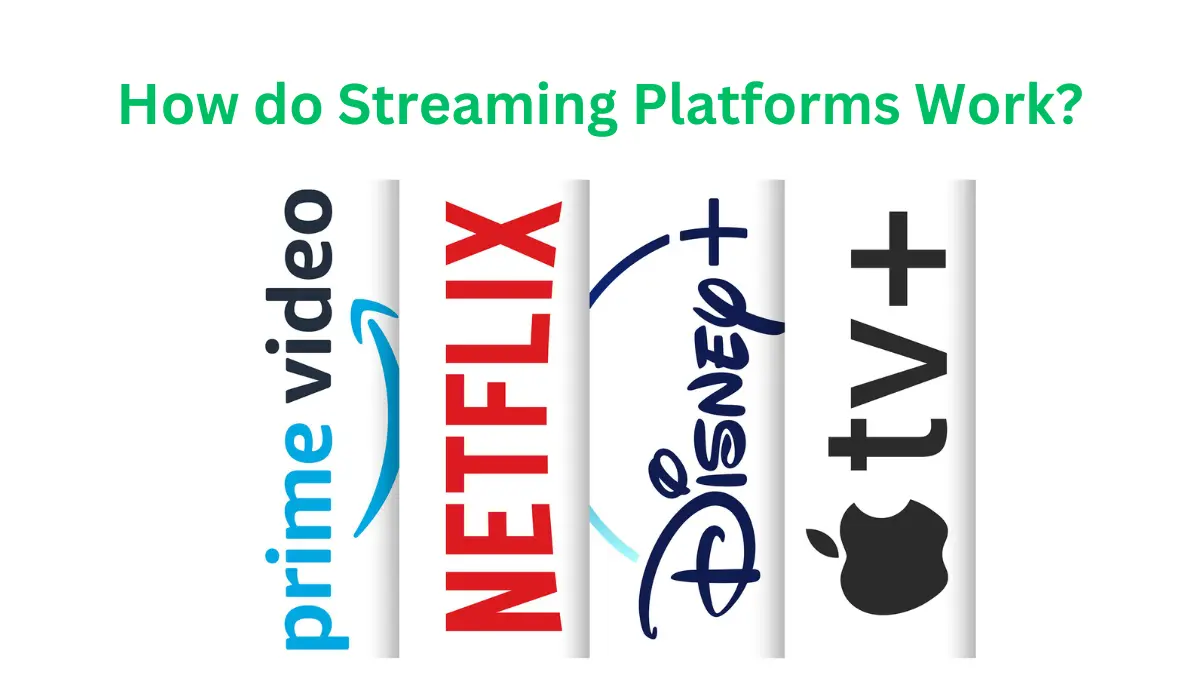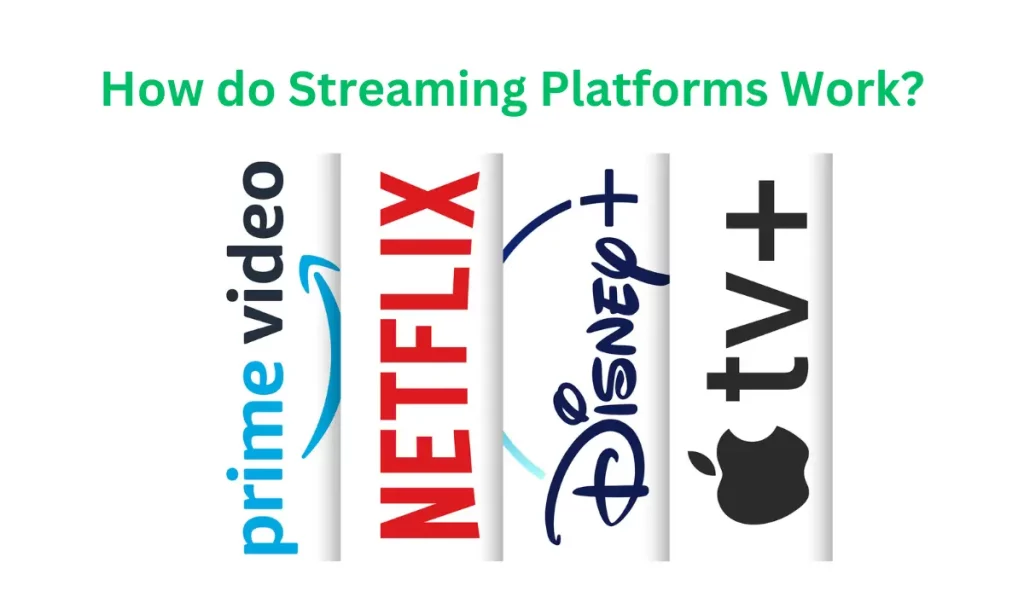Streaming platforms are a new entertainment window. Nowadays it has become very popular for watching movies, dramas sports events, etc. It is also a new opportunity for entrepreneurs. In this context, we talked about how do streaming platforms work.
Let’s jump into deep:
What are the Streaming Platforms?
Streaming platforms are online services that allow users to watch or listen to content, such as movies, TV shows, music, and more, over the internet. These platforms have become increasingly popular in recent years, as they provide on-demand access to a vast library of content, giving users the flexibility to consume media at their convenience.
Types of Streaming Platforms and Examples
Here are some of the most well-known types of streaming platforms:
Video Streaming Platforms:
Netflix: One of the most popular streaming platforms, known for its extensive collection of movies and TV shows, including original content.
Amazon Prime Video: Offers a wide range of movies, TV series, and original content to subscribers of Amazon Prime.
Hulu: Offers a variety of TV shows, movies, and original content, often with a focus on recent episodes of TV series.
Disney+: Disney’s platform, featuring content from Disney, Pixar, Marvel, Star Wars, and National Geographic.
HBO Max: Provides access to HBO’s extensive library, along with additional WarnerMedia content.
Apple TV+: Apple’s streaming service, featuring original movies, TV shows, and documentaries.
soap2day: It is a popular streaming platform that allows you to enjoy movies, TV shows, documentaries, and music without any registration.
Music Streaming Platforms:
Spotify: Offers a vast music library with free and premium subscription options, allowing users to stream music and create playlists.
Apple Music: Apple’s music streaming service, provides access to a vast music library and integration with Apple devices.
Amazon Music: Offers various music streaming options, including Amazon Music Unlimited and Amazon Prime Music.
Live Streaming Platforms:
Twitch: Primarily used for live streaming video games, but also used for other content like live podcasts, music performances, and more.
YouTube Live: Allows users to stream live video content on YouTube, including gaming, tutorials, and live events.
Sports Streaming Platforms:
ESPN+: Offers access to live sports events, original sports content, and documentaries.
NFL Game Pass: Provides access to NFL games, including live and on-demand content.
News Streaming Platforms:
CNNgo: Allows users to watch live CNN broadcasts and on-demand news content.
BBC iPlayer: Offers access to BBC programs, including news, documentaries, and TV series.
Educational Streaming Platforms:
Coursera: Provides online courses from universities and institutions.
edX: Offers a wide range of online courses and certification programs.
Khan Academy: Offers free educational content, primarily focused on K-12 subjects.
Anime Streaming Platforms:
Crunchyroll: Specializes in anime and manga content, offering a vast library of anime series and films.
Funimation: Focuses on anime streaming and provides a variety of popular anime titles.
These platforms typically require a subscription fee, but some also offer free, ad-supported options. Users can access the content on various devices, such as smartphones, tablets, smart TVs, and computers, making it convenient for people to enjoy their favorite media anytime and anywhere with an internet connection.
How do Streaming Platforms Work
Streaming platforms work by delivering media content, such as videos, music, or live broadcasts, to users over the internet in a way that allows them to access and consume the content in real-time or on-demand. Here’s a detailed overview of how streaming platforms work:
Content Acquisition and Storage:
Streaming platforms acquire content through various means, including licensing agreements with content creators, production of original content, or user-generated content.
The acquired content is typically stored on servers and data centers, where it is organized, cataloged, and encoded for streaming. High-quality video and audio files are often compressed to reduce file sizes while maintaining acceptable quality.
Content-Encoding:
Content is encoded into different formats and bitrates to accommodate various internet connection speeds and device capabilities. This allows for adaptive streaming, where the platform can adjust the quality of the stream based on the user’s internet connection.
Content Delivery:
When a user requests a specific piece of content (e.g., a movie or song), the streaming platform’s server locates the relevant file and begins delivering it to the user’s device in small, sequential chunks or packets.
User Request and Authentication:
To access the streaming platform, users typically need to create an account and log in. This authentication helps the platform identify the user and ensure they have the appropriate access rights based on their subscription level.
Client Application:
Users interact with streaming platforms through dedicated applications or websites, often referred to as client applications. These apps are available on various devices, including smartphones, tablets, smart TVs, and computers.
The client application handles user input, such as selecting content, pausing, seeking, or adjusting volume.
Buffering and Playback:
As the content is delivered in small chunks, the client application buffers a portion of the content to ensure smooth playback. This buffering minimizes interruptions in cases of fluctuating internet speeds.
Users can start playing the content while the rest continues to buffer. This process, known as adaptive streaming, adjusts the quality of the stream in real time based on the user’s connection speed and device performance.
Content Protection:
Streaming platforms implement digital rights management (DRM) and encryption to protect content from unauthorized copying and distribution. This ensures that only paying subscribers can access the content.
Streaming Protocols:
Streaming platforms use various protocols to deliver content, including HTTP Live Streaming (HLS), Dynamic Adaptive Streaming over HTTP (DASH), and Real-Time Messaging Protocol (RTMP). These protocols help optimize the streaming experience and adapt to varying network conditions.
Content Recommendation:
Streaming platforms often use algorithms and machine learning to analyze user preferences and viewing history. They provide content recommendations to users, increasing engagement and helping users discover new content.
Monetization:
Streaming platforms generate revenue through various methods, including subscription fees, advertising, and pay-per-view options for premium content.
Ad-supported services insert ads into the content, allowing users to access the platform for free or at a reduced cost.
Monitoring and Analytics:
Streaming platforms continuously monitor performance and user engagement to identify and address issues such as buffering problems or server outages.
They collect analytics data to gain insights into user behavior and preferences, which informs content recommendations and platform improvements.
Also Read
Global Content Delivery Networks (CDNs):
Streaming platforms often use CDNs to distribute content to users efficiently. CDNs have servers located in various geographic regions, reducing latency and optimizing content delivery.
Overall, streaming platforms offer a convenient and flexible way for users to access and enjoy a wide range of content over the internet, allowing them to customize their viewing or listening experience to their preferences and schedules.
Technical Requirements for Establishing Streaming Platforms
Establishing a streaming platform, whether it’s for video, audio, or any other type of content, involves several technical requirements to ensure a smooth and reliable streaming experience for your users. Here’s a detailed overview of the technical requirements for setting up a streaming platform:
Content Hosting and Storage:
High-capacity servers and storage solutions are required to host and store your content. Use Content Delivery Networks (CDNs) to distribute content to users efficiently.
Content-Encoding:
Transcoding servers are needed to convert video and audio files into multiple formats and bitrates to support various devices and bandwidths.
Content Management System (CMS):
A robust CMS is needed to organize and manage your content, metadata, and user access.
Streaming Protocols:
You need to choose a streaming protocol like HTTP Live Streaming (HLS), Dynamic Adaptive Streaming over HTTP (DASH), or Real-Time Messaging Protocol (RTMP) based on your target devices and platforms.
Player Development:
Need to develop or integrate a media player that supports your chosen streaming protocol. HTML5 video players are common for web-based streaming.
Content Protection and DRM (Digital Rights Management):
You should have a security system to protect your content. That’s why you need to implement DRM technologies to protect content from unauthorized access and piracy.
Live Streaming Infrastructure:
For establishing streaming platforms, you need hardware and software solutions for live streaming events, including cameras, encoders, and live streaming servers.
Scalability:
You need to design infrastructure for streaming platforms to scale easily to accommodate more users and content as your platform grows. Consider using cloud-based solutions for scalability.
Bandwidth and Server Resources:
Need sufficient bandwidth and server resources for quality service to handle the expected traffic, especially during peak usage times.
Quality of Service (QoS) Monitoring:
Implement tools for real-time monitoring and analytics to track the performance and quality of your streaming service. This helps in identifying and resolving issues quickly.
Content Delivery:
Need to set up edge servers strategically located around the world to reduce latency and improve content delivery speed.
User Authentication and Authorization:
Develop a secure authentication system for user access control and subscriber management.
Content Recommendations and Personalization:
Need to implement algorithms and systems for content recommendations and personalization based on user preferences and behavior.
Payment Processing:
Integrate with payment gateways and subscription management systems for monetization the platform.
Content Metadata and Search:
Efficiently store and manage metadata for content discovery and search functionality.
Mobile and Device Support:
Ensure compatibility with a wide range of devices, including smartphones, tablets, smart TVs, and gaming consoles.
Cross-Platform Compatibility:
Optimize the user experience for different operating systems and web browsers.
Content Analytics:
Collect and analyze user data to make informed decisions regarding content, performance, and user engagement.
Content Delivery Security:
Implement security measures to protect against DDoS attacks, data breaches, and other security threats.
Content Backup and Disaster Recovery:
Regularly backup your content and have disaster recovery plans in place to mitigate data loss.
Regulatory Compliance:
Ensure compliance with local and international regulations, including copyright laws, accessibility standards, and data protection regulations like GDPR.
User Support and Feedback Systems:
Provide customer support channels and feedback mechanisms for users to report issues or provide suggestions.
User Interface and User Experience (UI/UX) Design:
Design an intuitive and user-friendly interface for your streaming platform to enhance the user experience.
Testing and Quality Assurance:
Rigorous testing of the platform to identify and address bugs, performance issues, and compatibility problems.
Content Monetization Models:
Implement subscription, advertising, or pay-per-view models, depending on your business strategy.
Continuous Updates and Maintenance:
Regularly update and maintain the platform to address evolving user needs and technological advancements.
Building a streaming platform is a complex endeavor that requires careful planning, a strong technical team, and significant resources. Keep in mind that these technical requirements may evolve over time as technology and user expectations change.
End Words
I hope this article will help you to understand how do streaming platforms work and what are the technical requirements for establishing it.





